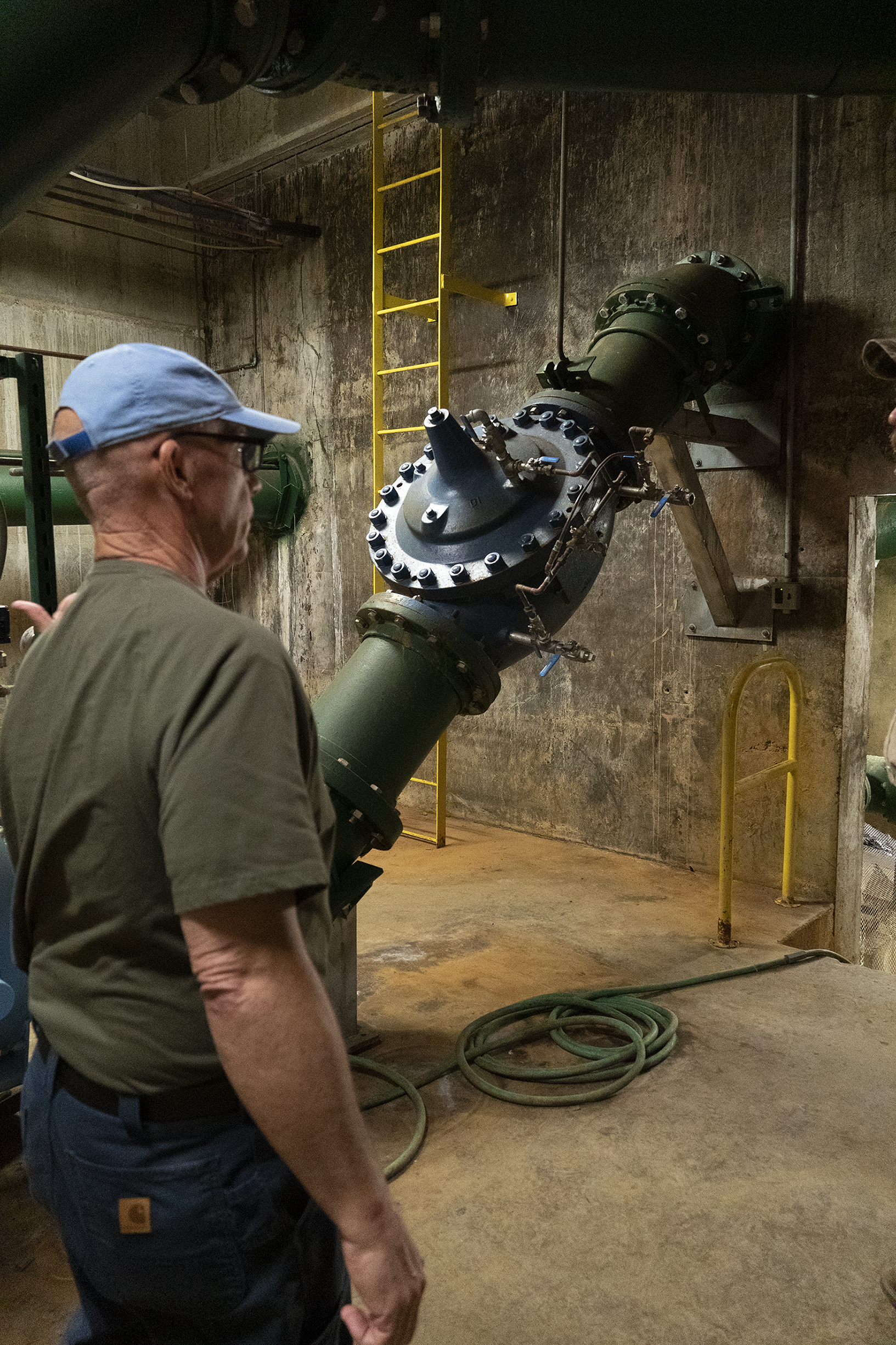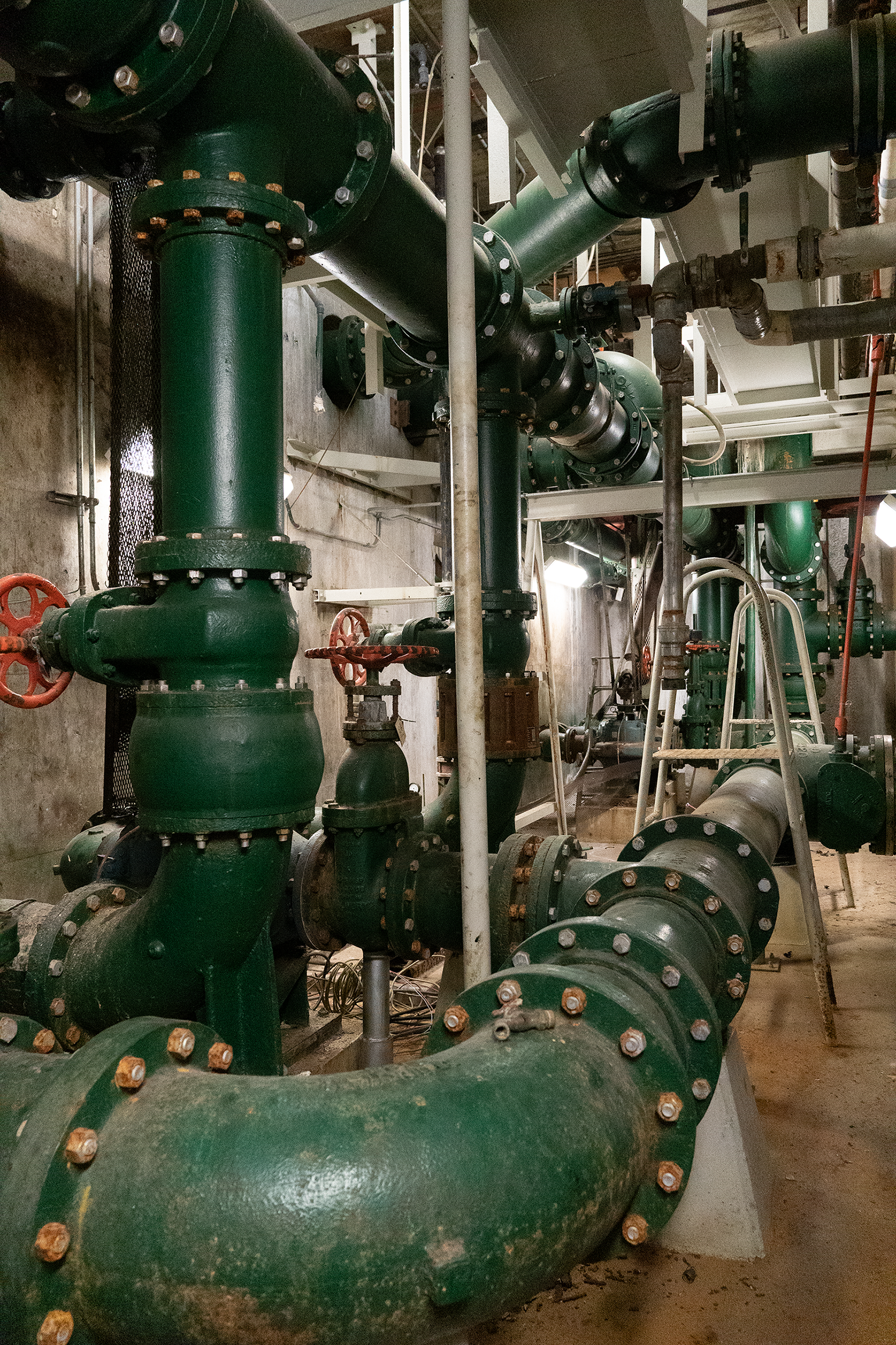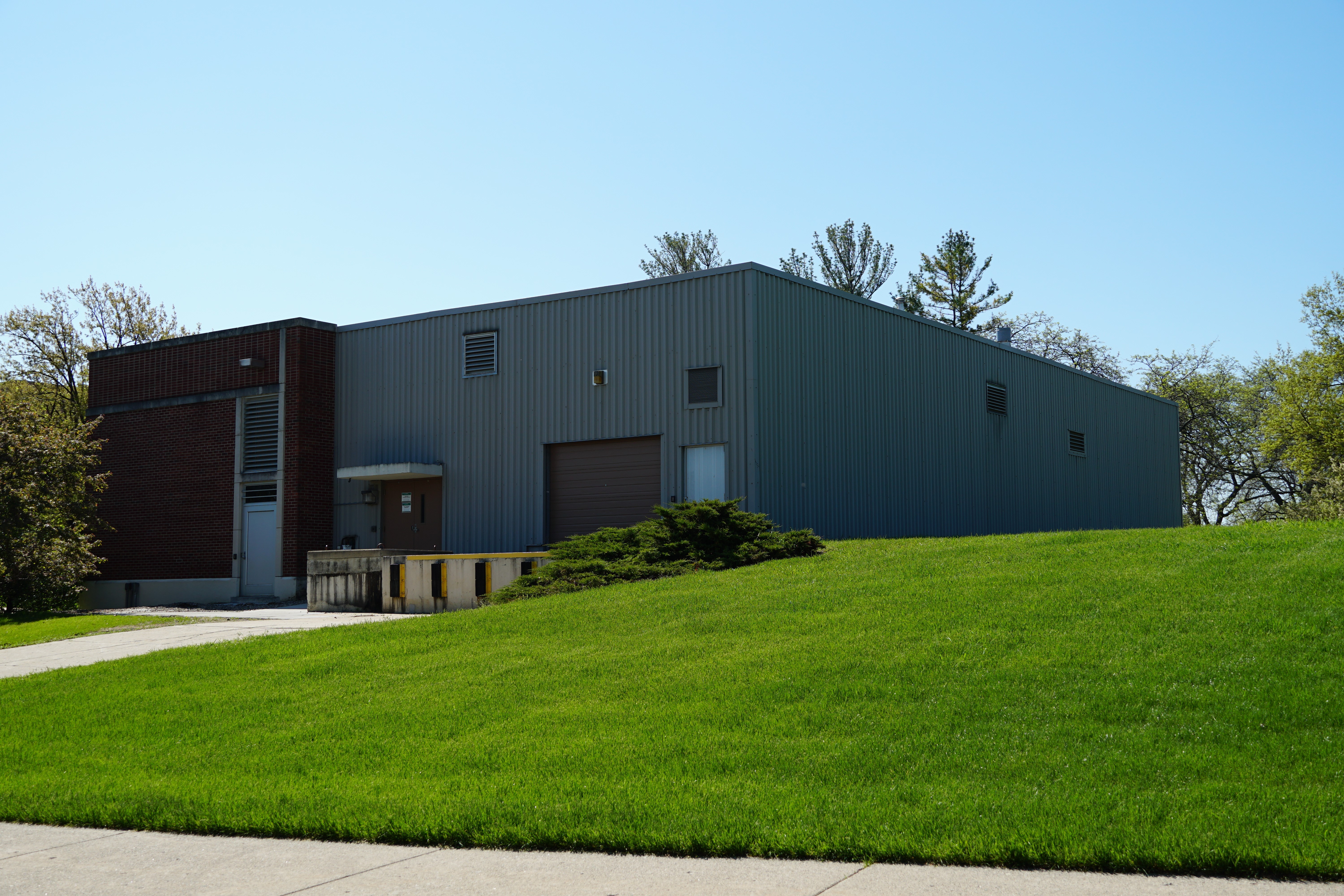The unmarked, unassuming building that once supplied water to campus for 7 decades
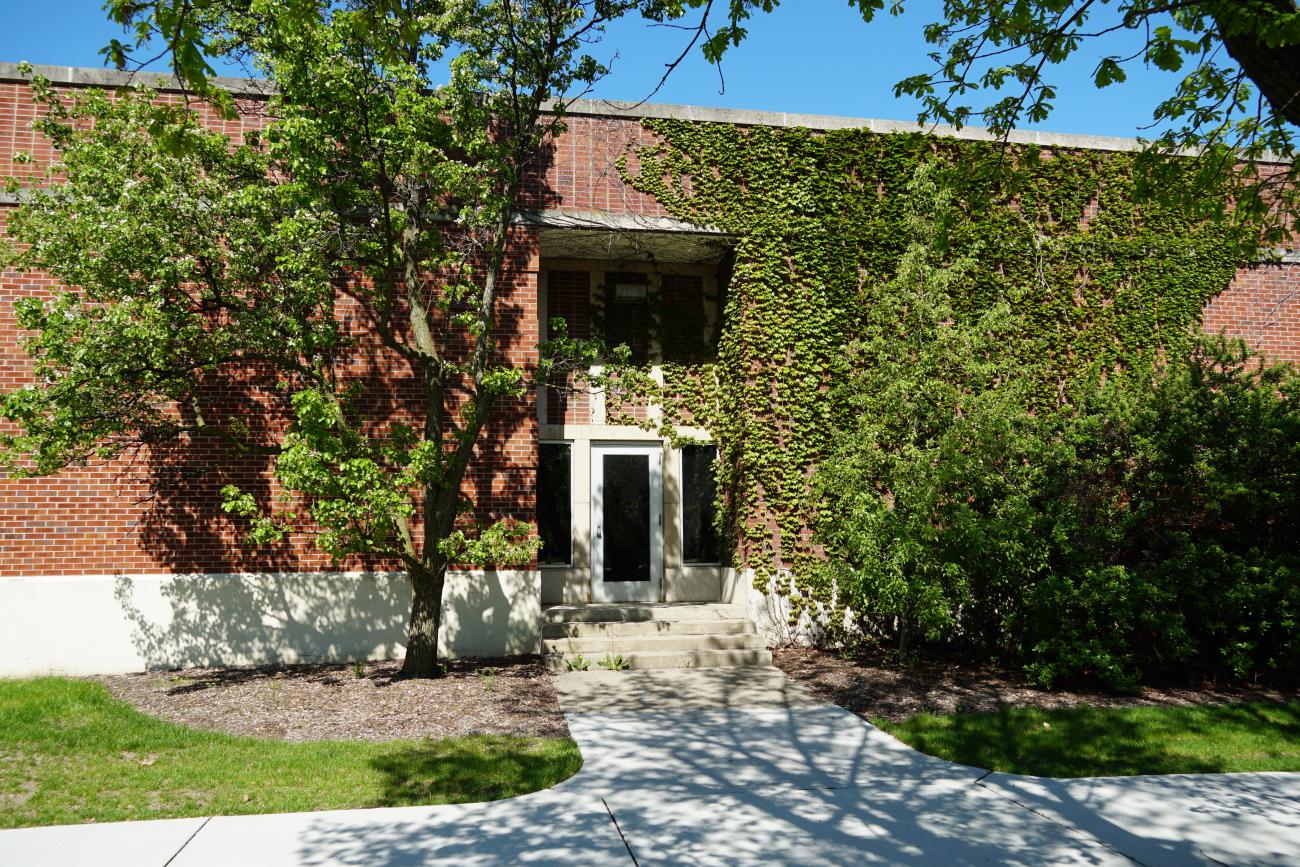
June 22, 2022
Unlabeled on modern campus maps, the nondescript ivy-covered brick building and its adjacent raised grass mound sit just west the Engineering Building near the tennis courts and football practice fields. Its only sign gives its address, 874 Red Cedar Road.
That little-known building that thousands of Spartans have passed by daily for decades is the water reservoir that once supplied water to campus with electric pumps and a 1-million-gallon underground storage tank. Its critical purpose was also why it had to hide in plain sight -- no one wanted to advertise where you could gain access to MSU's water supply.
Rendered obsolete in 2020 when MSU's $21 million water treatment plant and water tower entered service, the reservoir was decommissioned and permanently disconnected shortly afterward from the campus water system. The newer treatment facility chlorinates the water to disinfect it like the reservoir did, but it also improves the water's taste and appearance by removing the naturally occurring iron and other minerals that cause complaints from campus water-users.
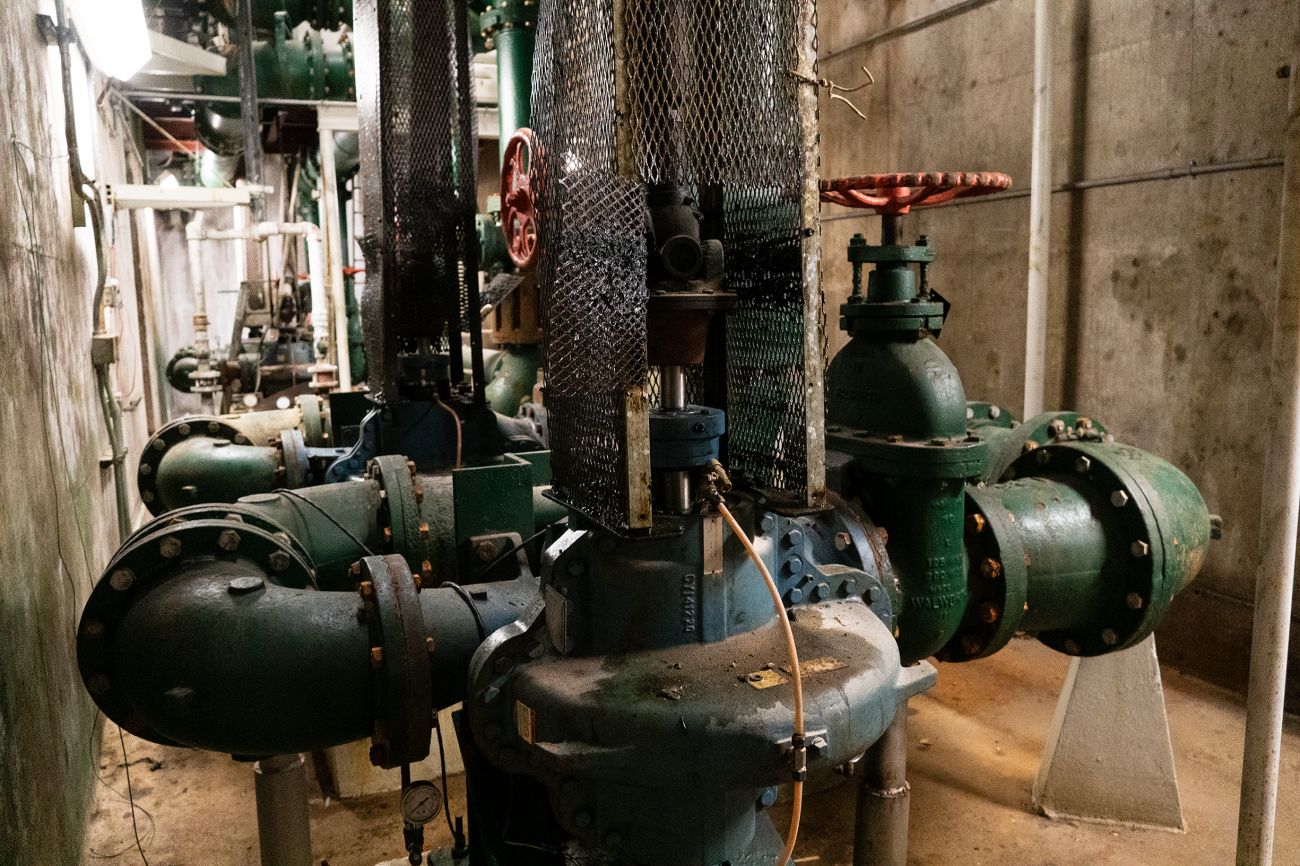
The new facility also occupies a much more secure, fenced location that doesn't require hazardous chemicals -- liquified chlorine and caustic soda used in the treatment process -- to be stored in and regularly delivered to central campus.
Like its predecessor, the water tower provides consistent water pressure throughout campus but does so without paying for electricity to run pumps thanks to free gravity and having its 2-million-gallon storage tank elevated 150 feet off the ground. On the rare occasions when the reservoir lost power, pumps at the more than a dozen wells on south campus were used to maintain water pressure, but thankfully that never was needed for long periods.
Plus, the remoteness of the new storage tank, vertically speaking, eliminates another problem reservoir operators sometimes faced -- shooing away gameday tailgaters attempting to park on campus' water supply.
So the next time people pass by 874 Red Cedar Road, they now can know what the people and equipment inside were doing from 1951 to 2020 inside that building that was so important to campus life it had to go unnamed.

